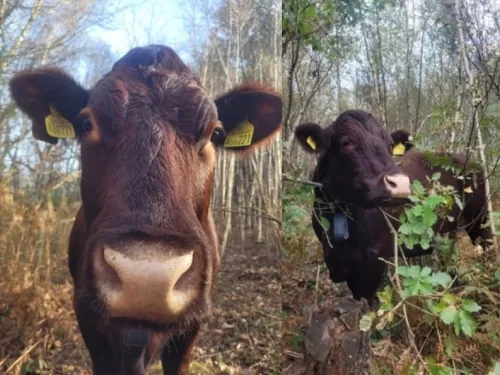
How livestock can aid seed dispersal
Check out our other blog on the main methods that seeds use to disperse themselves via grazing animals.
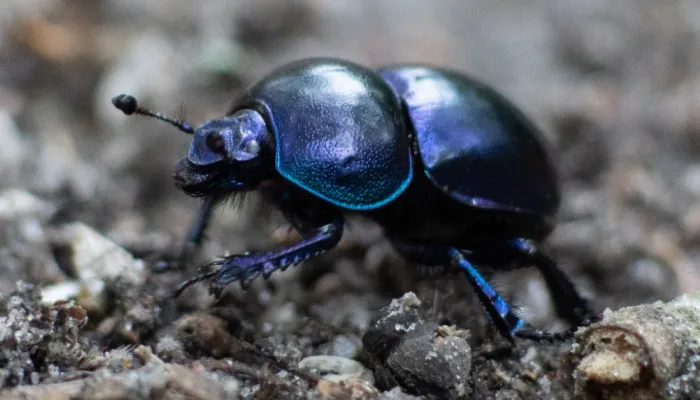
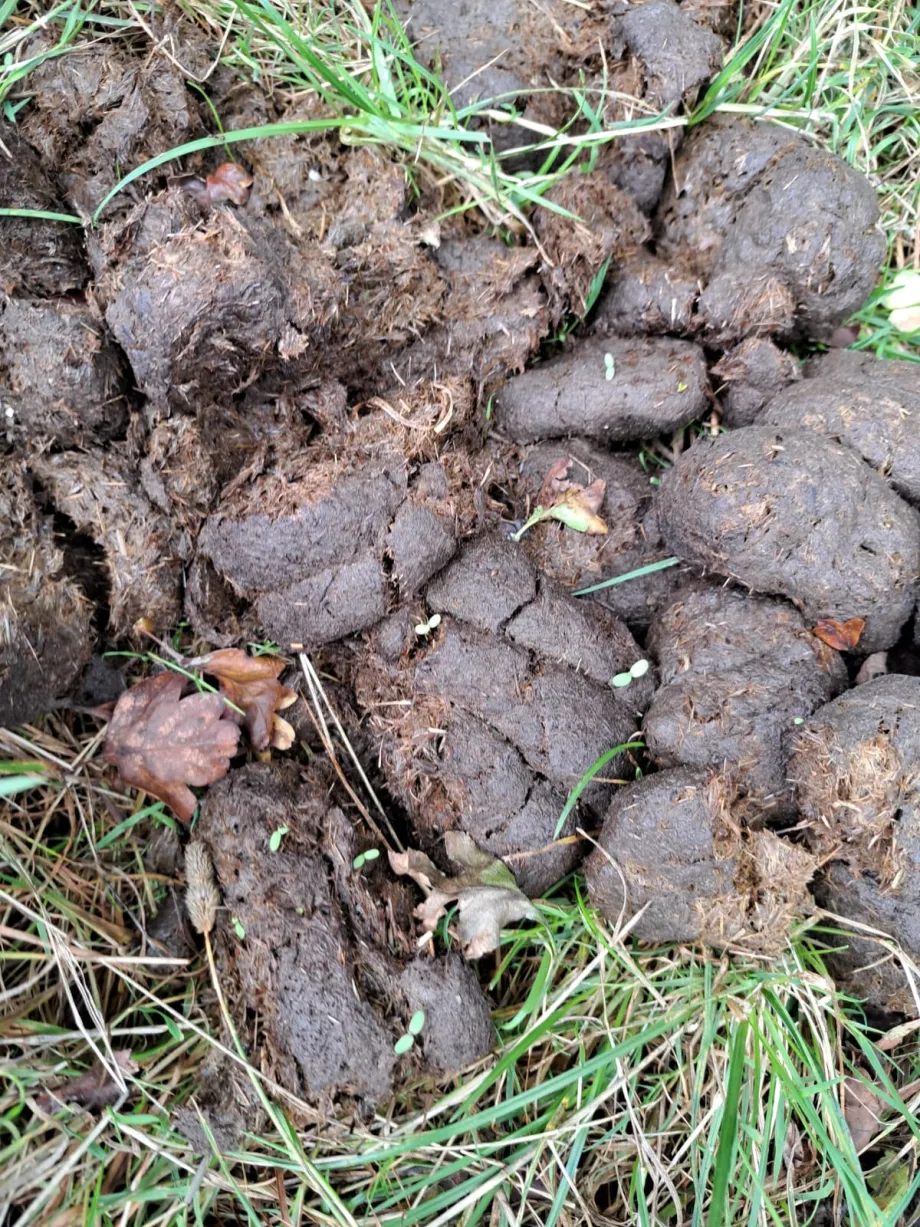
Dung beetles rely on the dung of animals - such as our livestock - for habitat, to survive and reproduce. For them, dung is the most important resource, and without it they wouldn’t survive. In return for the provision of habitat, dung beetles act to enhance the impacts of dung; they tunnel and drag the dung into the ground. When tunnelling, dung beetles may also bury seeds into the ground, enhancing their chances of germinating and enabling seeds to survive by escaping predation. Dung beetles create tunnel systems when they drag dung into the soil, aerating the soil and producing a healthy environment for microbes. This increases the carbon storage potential of the soil. These tunnels are also good for opening up compacted soils so plant roots can penetrate more deeply. The act of dragging the dung underground also ensures that the nutrients reach the depth of plant root systems.
It is important that cows have enough fibre in their diet so their dung creates a suitable habitat for dung beetles to colonise. Dung beetles should colonise a pat within 2-3 days of it being produced to kickstart the decomposition process; otherwise the dung is only broken down by weathering which can take a long time and is more harm than good to a patch of grass (through smothering).
Dung beetles can also provide parasite removal services for grazing livestock, in return for utilising their dung as habitat. Parasite eggs are excreted by infected livestock and larvae hatch within the dung pat, hoping to survive long enough to be eaten by grazing livestock. When dung beetles drag dung underground it reduces the likelihood that the larvae of parasites will be able to survive and reinfect an individual when an area is grazed, thus reducing the abundance of livestock gastrointestinal parasites on a site.

Livestock dung contains all three types of nutrient essential for plant growth and survival (nitrogen, phosphorus, and potassium). A deficiency in any of these nutrients will have detrimental impacts on plant health; nitrogen is essential in plant growth and leaf development, phosphorus is involved in root development, and potassium is needed for growth of fruits and flowers. The differing nutrient content of animal faeces is a factor we may consider when using them to graze different habitats. For example, as sheep faeces contains less nutrient than cattle, they are better suited to graze sites that may be more nutrient sensitive.
Dunging promotes the nutrient cycling of the ecosystems, helping to create a nutrient-rich habitat for plants. Nutrients cycle faster in a grazed system than a non-grazed system so they are available much sooner for the plants to take up.
Ponies dung in latrine areas which concentrates the nutrients they add to the soil in one area. Sheep, cattle, and goats dung largely at random so the nutrients they add to the soil are more spread about on a site, creating a shift in nutrient availability over time. This in turn helps to increase biodiversity and seasonal plant successions on a site as some plants like nutrient-rich areas and some do not.
Dung creates shifts in earthworm distributions in the soil - four times more earthworms congregate beneath fresh dung deposits than elsewhere in the soil. This enhances the soil fertility in the vicinity of the dung; earthworms will ‘plough’ the soil, mixing together the soil and the organic matter of the dung (and the nutrients within), for it to become available for plants, bacteria, and fungi.
Dung provides ideal habitat for many invertebrate species. In fact, up to 200 individual beetles alone can live in a single cow dung pat. Flies and beetles will colonise a pat within minutes of it being deposited and this is where they lay their eggs. Later, predatory insects arrive to feast on the larvae and the insect population within the pat reaches its peak at about 1000 insects.
Many species of bird will forage in dung in search of invertebrates as a source of food, particularly in the colder winter months when other food sources are in short supply. For example, dung invertebrates form a crucial part of the diet of red-billed choughs; choughs will probe into dung pats to extract dung beetle and other insect larvae. Depending on the species of bird, some will remove insects from the surface of the dung, some will probe the dung for buried insect larvae, and some will turn over sections of dung or dig at it to reach insects underneath. Each dung pat can provide food for birds for about 2-3 weeks post excretion as insect larvae develop within.
Invertebrates in dung also provide a food source for other animals; the insects hovering over pats can provide food for young bats as their peak abundance coincides with when the bats begin feeding in flight. They are also an important food source for small mammals such as hedgehogs.
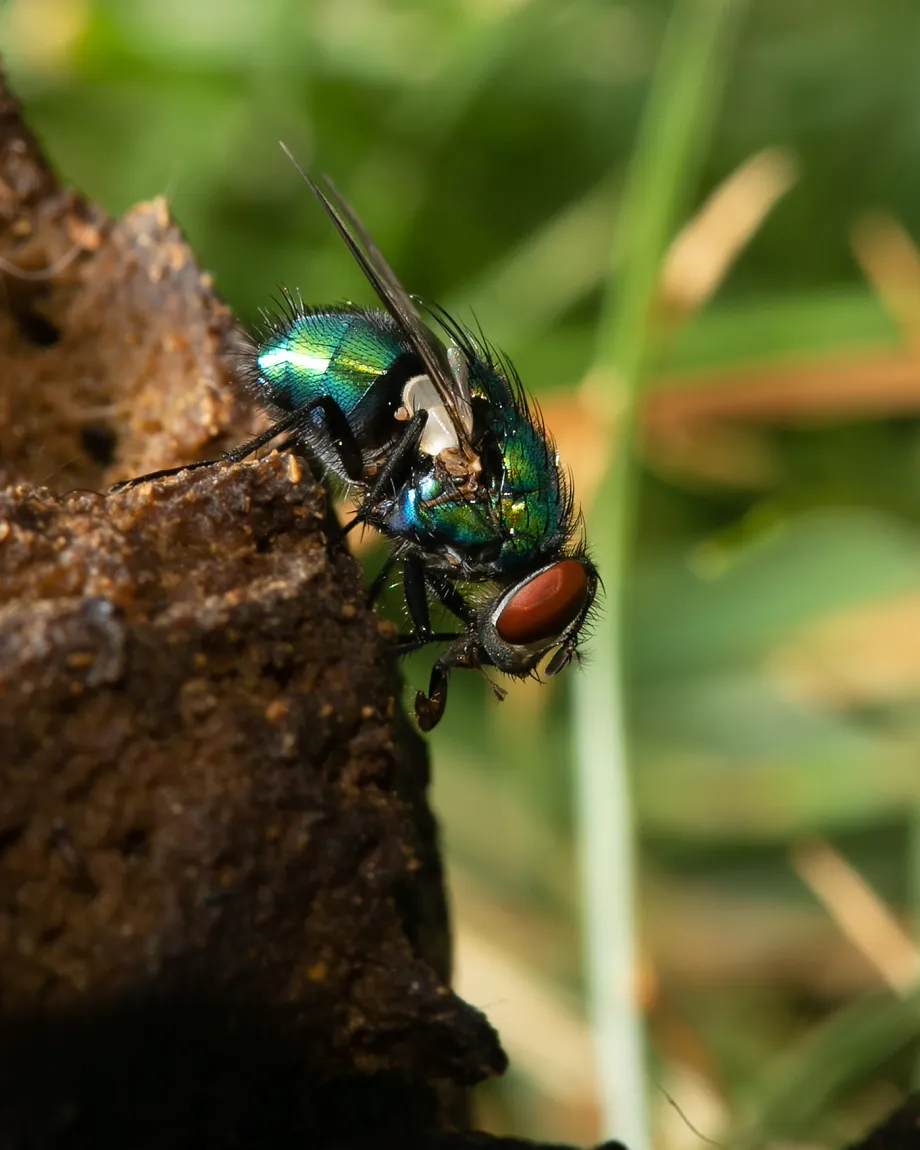
Jon Hawkins – Surrey Hills Photography
Coprophilous fungi are types of fungi that use the nutrients in dung to grow. They are specialised to grow on dung, mainly on that of herbivorous mammals. The spores are released from the fungi (they can be projected over large distances to ensure they attach to a range of vegetation) and latch onto vegetation that is then eaten by herbivores. The spores are able to pass through the animal’s digestive system due to their thick cell walls (which mean they are not broken down by the animals stomach acid) and are excreted. The fruiting body of the fungus will then utilise the nutrients in the dung to germinate and grow. Some coprophilous fungi are specific to the dung of a particular species - for example, miniature woolly inkcaps favour horse dung because it decomposes at a fast rate and has a low pH.
The fungi themselves have an important role in converting dung into organic matter and releasing and recycling its nutrients to make them available for consumption by plants, which helps to improve soil fertility. Their spores also have a role in reconstructing past climates and environments; research into coprophilous fungi spores have been used to reconstruct the distribution of large herbivores in the past.
The dung from different herbivore species contains different levels of undigested material and different moisture contents, which impacts their uses to be used as fertilisers. For example, pony dung has a thatched structure as it contains lots of undigested material, therefore it retains heat for a longer period, unlike cattle dung which has a higher moisture content and less undigested material.
Animals will avoid grazing near dung patches of their own species to limit their parasite burden. They will, however, graze around patches of dung of a different animal species. Using a mixed grazing setting (utilising more than one grazing species on a site) allows for a reduced parasite burden for the grazing animals by disrupting the parasite life cycle. This also this creates patches of tall vegetation which can provide good shelter for invertebrate species.
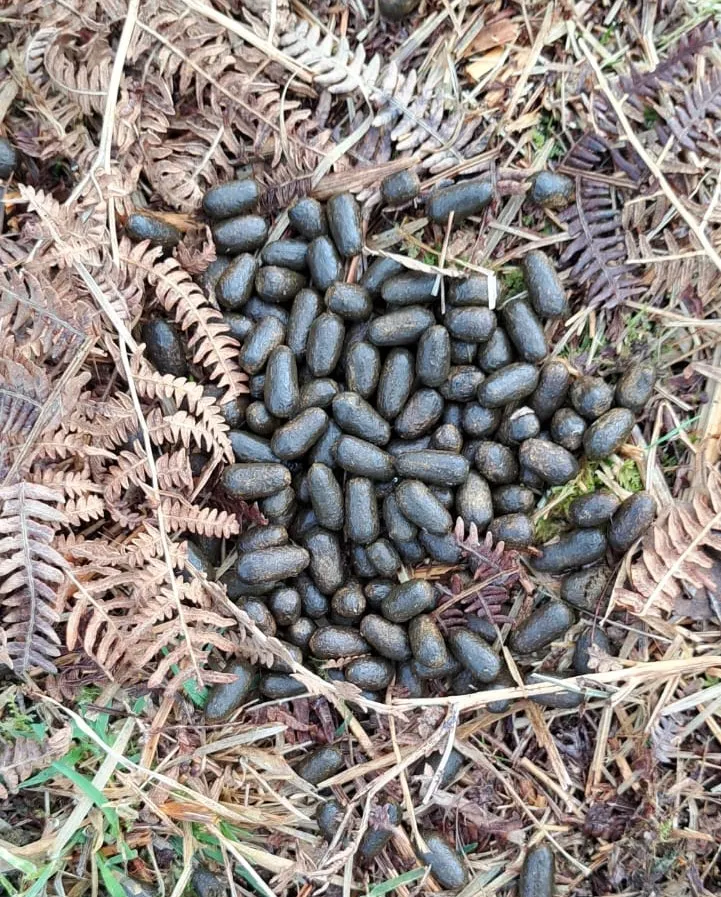

Check out our other blog on the main methods that seeds use to disperse themselves via grazing animals.
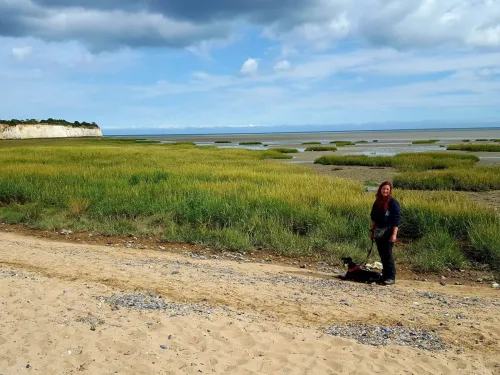
There's a big difference between the dung of wild grazing animals and that of dogs. Dog poo can be filled with chemicals that disrupt the natural balance of nature reserves and should be binned.